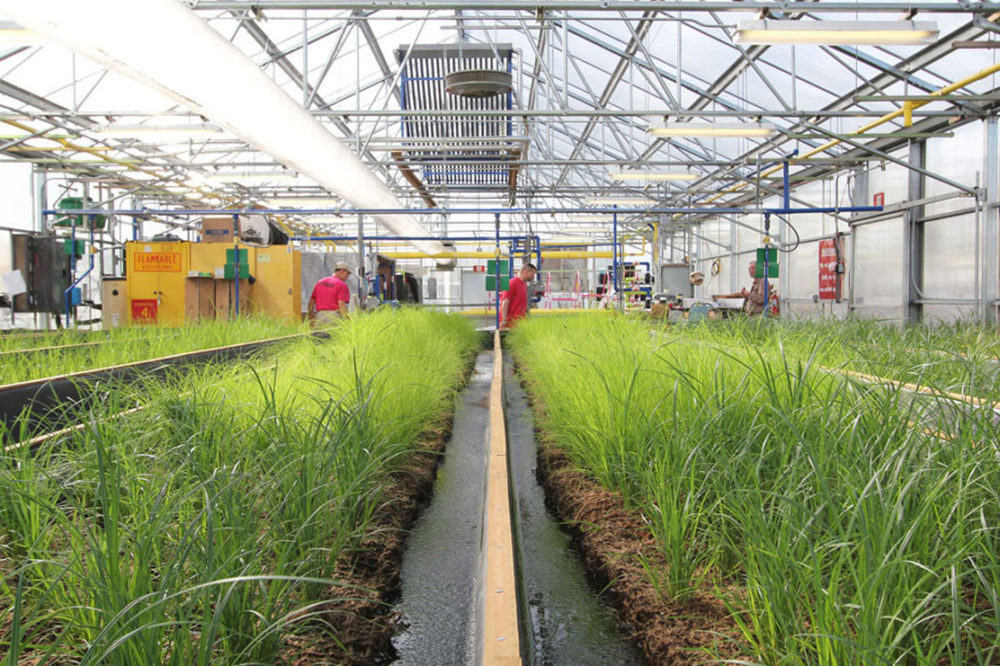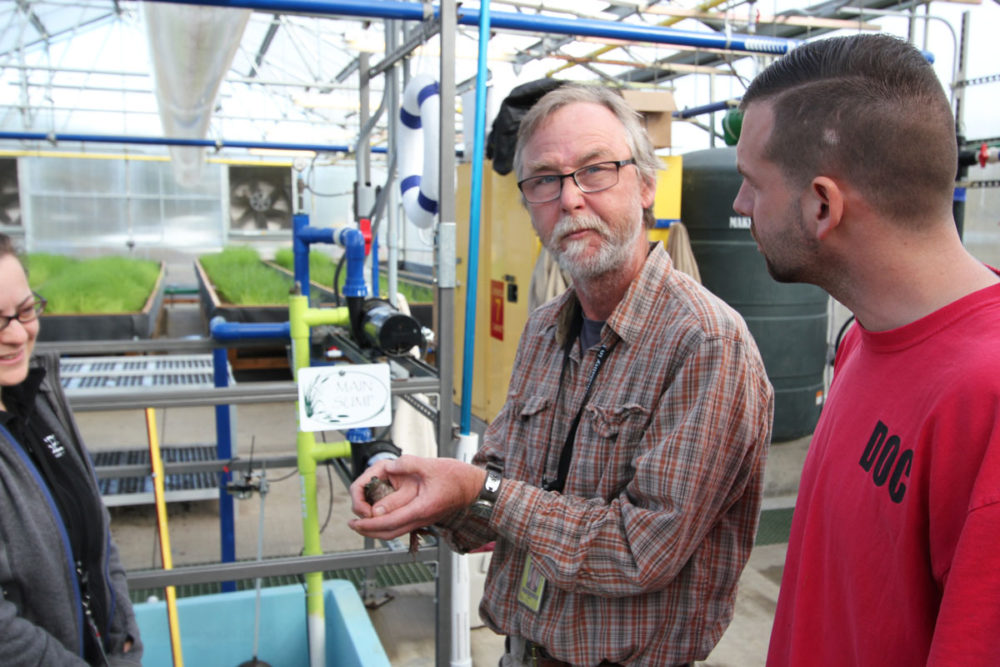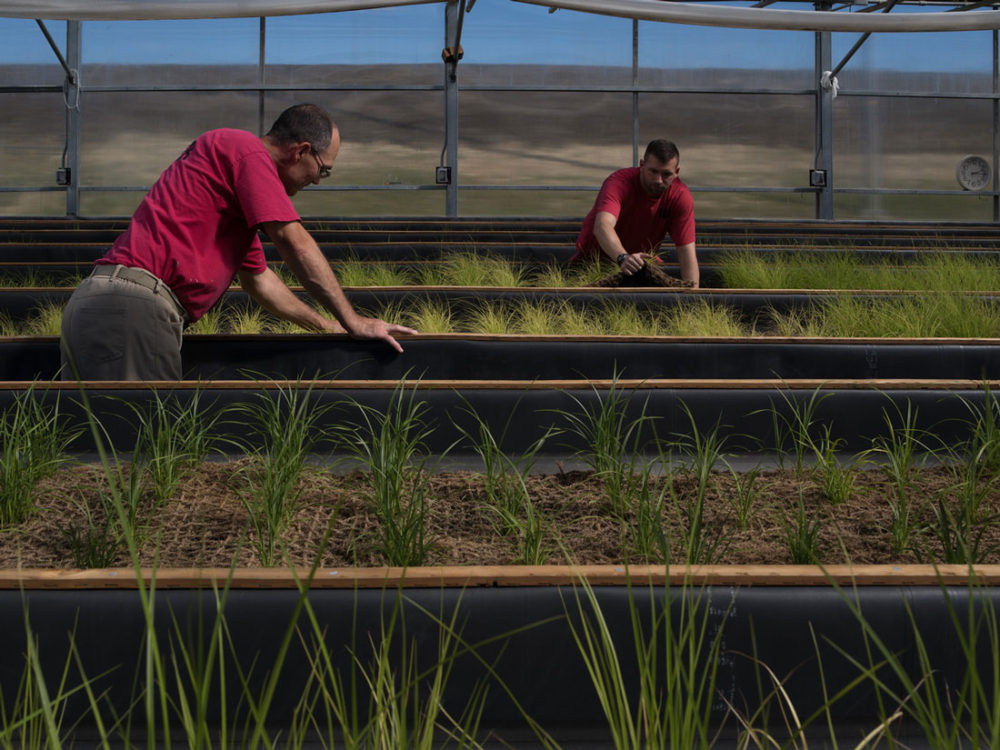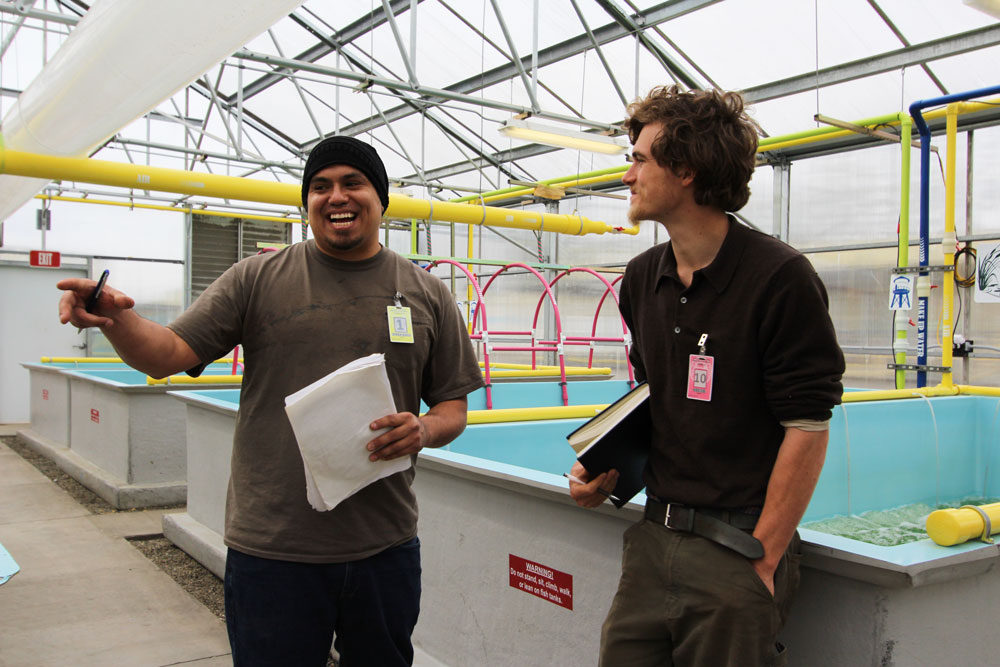Emergent Pre-Vegetated Mats (EVM) Program
SPP has embarked on an ambitious pilot program to cultivate pre-vegetated mats of wetland plant species for habitat restoration benefiting the Oregon spotted frog (subject of a past rearing program) and salmon species. Thanks to significant support and ingenuity of staff and technicians, the surplus tilapia facility at Stafford Creek Corrections Center (SCCC) was converted to an aquaponics system. Two large fish tanks contain more than 100 koi, and their waste is a nitrogen source for plant growth; we add compost tea to provide other essential nutrients. The plants in this system are species of native sedges and rushes, classified as emergent vegetation. In the winter months, emergent plants are under water; in the spring and summer, as the water recedes, the plants grow rapidly and emerge from the water’s surface.
In the nursery, we grow emergents in coir (coconut fiber) mats and do not need soil. Water circulates back and forth between the plant beds and fish tanks via elaborate, color-coded plumbing.


The Emergent pre-Vegetated Mat (EVM) program is part of a collaborative experiment funded by the US Department of Fish and Wildlife. Partners install mature EVM on plots following various weed control treatments. The plots will be monitored for plant establishment and weed suppression success over a three-year period. The technical accomplishments of the program thus far bode well for positive results from this experiment in ecological restoration.
The EVM team includes incarcerated technicians, Stafford Creek Corrections Center maintenance staff, Evergreen’s program coordinators and managers, Joint Base Lewis McChord, the Center for Natural Lands Management, Washington Department of Fish and Wildlife and the United States Fish and Wildlife. All have done an amazing job meeting the challenges of the innovative program’s technical demands. We installed the first mats at Joint Base Lewis McChord in early November 2016, and a second batch early in 2017. From 4,000 square feet of growing beds, our aim is to produce 8,000 square feet of vegetated mats every year.

EVM technicians
SPP staff from The Evergreen State College provide the educational framework and protocol management for the technicians. We deliver weekly workshops on plant sciences topics such as wetland ecology, plant identification, plant cultivation, and insect and disease management. The technicians also assist in Master of Environmental Studies thesis research of the system’s nutrient flow and input. The skills acquired by the aquaponics technician prepare them for careers in sustainable infrastructure, wetland science, or the burgeoning industry of hydroponic plant culture.
Blogs on the EVM program
Turning a new leaf with emergent vegetated mats! (2017)



